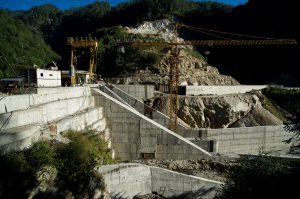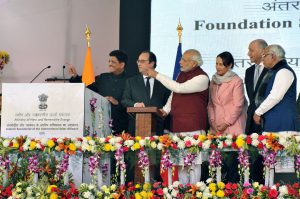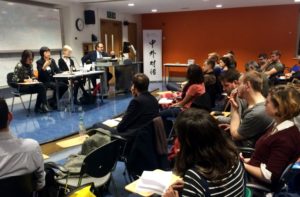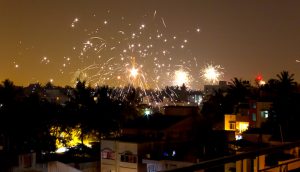The day began with a bang, or actually a series of bangs, as children started setting off firecrackers in the morning to celebrate Diwali, the festival of lights, in India. In fact, the firecrackers had been going off for a while, and since Diwali was celebrated on a Sunday this year, people were letting off firecrackers from Saturday onward.
By Sunday evening, a thick smog lay across Delhi. Still, the firecrackers kept going off until well past midnight. By early Monday morning, the pollution level in Chanakyapuri – where most of the embassies are located – was off the charts.
There had been hope that this year there would be fewer firecrackers. Since 2010 there have been a number of campaigns to limit the use of firecrackers during Diwali, with intense reporting from early 2014 onward as Delhi’s air pollution outstripped that of Beijing’s. This was not a comfortable record for India to have. When the US President, Barack Obama, visited New Delhi in early 2015, the US Embassy bought 1,800 air purifiers, setting off a boom in the market for that particular product, and an intense debate. In December 2015 the Delhi High Court asked the government of the city and the country to do something about it, as living in Delhi was equivalent of living in a “gas chamber”.
See: Breathing gets more injurious to health in India’s capital
See: It’s official: Breathing kills in India
The government has struggled to respond to the crisis, but while it has been able to make a little progress in Delhi, other Indian cities continue to fare badly, with cities in Pakistan and Bangladesh also set to replicate problems. With the problem described as a national crisis, business as usual could not continue, and last year Delhi implemented its controversial “Odd Even” scheme, during which private cars with odd-numbered licence plates were allowed to drive on odd-numbered days, and cars with even-numbered license plates were allowed to drive on even-numbered days. Although the results showcased that the levels of pollution were dependent more on heavy transport traffic, crop residue burning in neighbouring states, and weather patterns than by private vehicles, the massive civic participation by Delhi’s residents was an inspiration.
Unwillingness to change
Nothing would have demonstrated this willingness to change personal behaviour than a drop in the use of firecrackers. The situation in Delhi was already grim even before Diwali, with stubble burnings in the states of Punjab, Haryana and Uttar Pradesh; low wind speeds; and a drop in temperature raising pollution levels. The System of Air Quality and Weather Forecasting And Research (SAFAR) of the Ministry of Earth Sciences gave a warning about the level of particulate matter – with a specific focus on PM2.5, or particulate matter of less than 2.5 microns in diameter, which is small enough to penetrate the defences of the body, and directly enter the bloodstream.
The guideline level established by the World Health Organisation on PM2.5 is that a 24 hour average of 25 microns per cubic metre (μg/m3) is considered safe. In India the guideline level is 60 μg/m3. In Delhi, over the last month there were a number of days when the levels were in the most severe category maintained by SAFAR, of 251-350 μg/m3 over a 24 hour period, and so the government had advised people to stay indoors and to refrain from outdoor exercises.
The setting off of firecrackers would have been on top of the list of activities to avoid, as burning material add most to PM2.5 levels. The Delhi-based think tank, Centre for Science and Environment, also put out a press release, advising the public to abstain from using firecrackers, and suggested that India follow the models of China and the UK to deal with this problem.
Not much effect
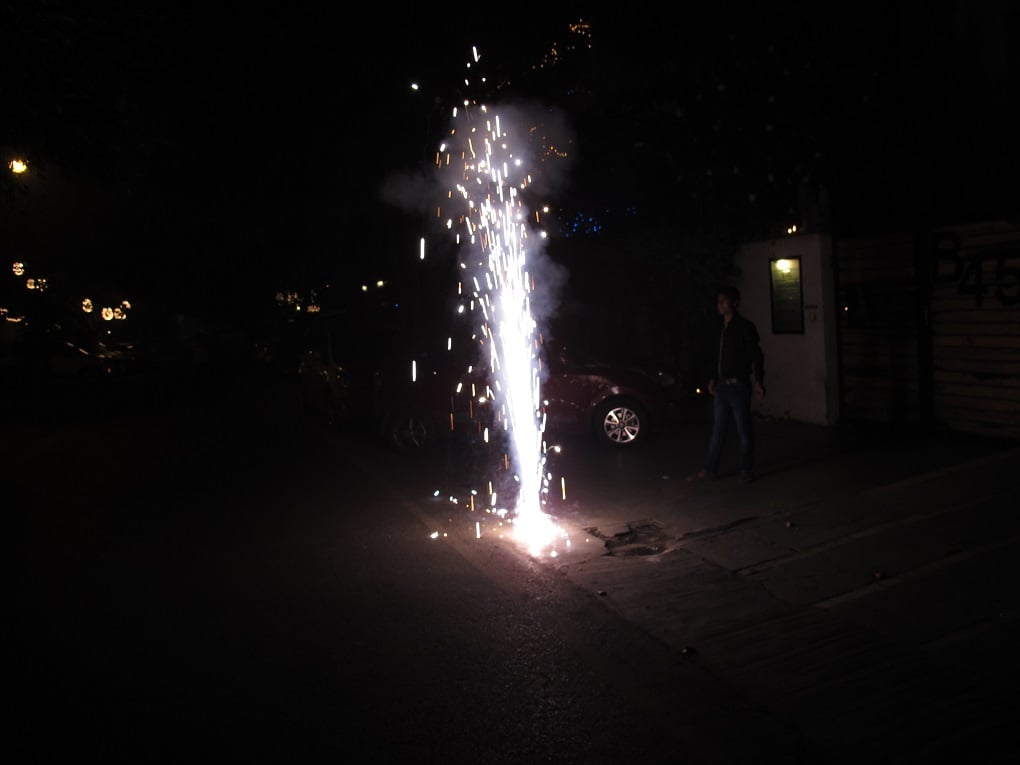
Given the public reaction, though, it seems that none of this had much effect. A campaign by the Delhi to target “Chinese firecrackers”, with limited information on how much of the pollution was caused by them, or how much this impacted overall pollution, did not inspire confidence. In the end, even in the most well-off areas, people were letting off firecrackers although the pall of pollution hung visibly in the air. Given that firecrackers have been a traditional way for people to celebrate Diwali for the last few hundred years, it is a difficult campaign to conduct, in the teeth of public opinion, and affecting what is probably north India’s biggest festival.
At 8 a.m. on Monday, the Air Quality Index Network showed the PM 2.5 level near the US Embassy in Chanakyapuri at 999 μg/m3, the highest level it is calibrated to show. That is nearly 17 times the Indian standard limit of 60 μg/m3.
Limited hope
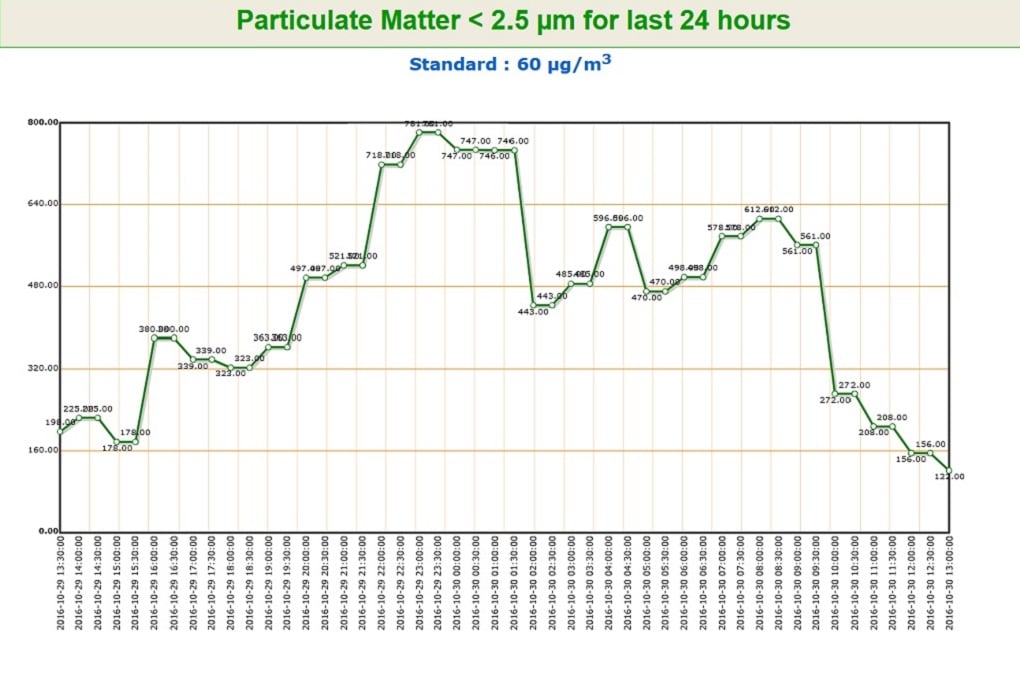
The data from another monitoring station, though, did provide a limited amount of hope. On Diwali in 2015, the Delhi Pollution Control Committee monitoring stations provided vivid proof of a spike in pollution levels, with the Punjabi Bagh monitoring station showing a spike that went to 853 μg/m3 at midnight. This year the levels were lower, with a high of 781 μg/m3 on Saturday night, and staying just below that level on Sunday night. The spike in PM 2.5 level at this monitoring station came at 2 a.m. on Monday, when it crossed 678 μg/m3.
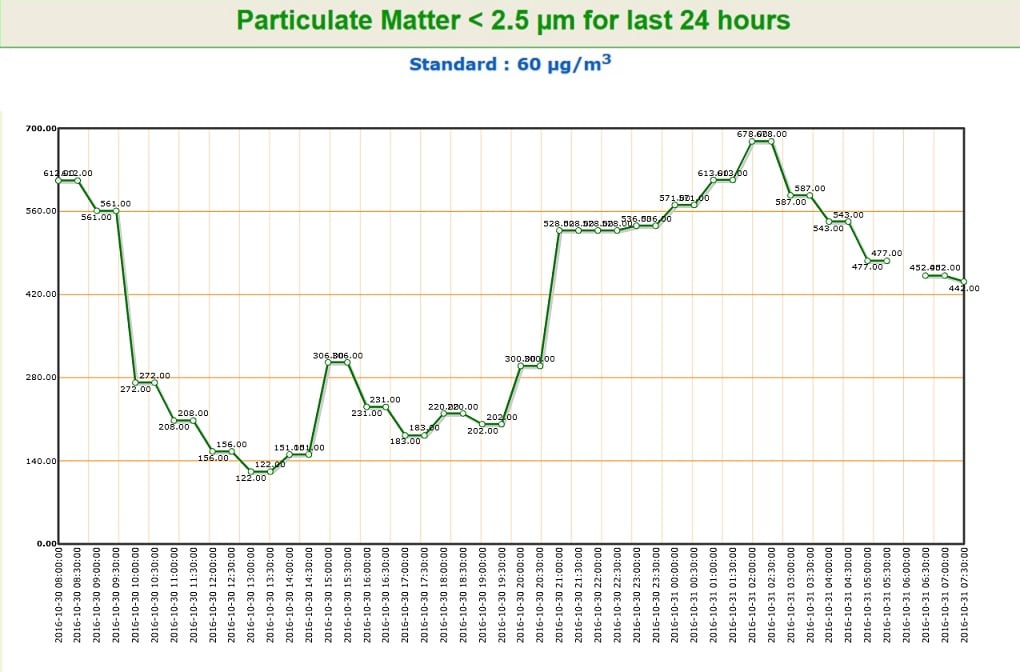
Though more than 11 times the limit prescribed by the government, this was better than the situation last year. Does this mean that the residents of Delhi are self-correcting? From at least one monitoring station, the evidence provides only a hint in that direction, but at least it is a good direction.
![<p>By the evening the pollution was thickly visible across the city [image by Michael Kohli]</p>](https://dialogue.earth/content/uploads/2016/10/4309056447_5b2cfb4057_o-scaled.jpg)

